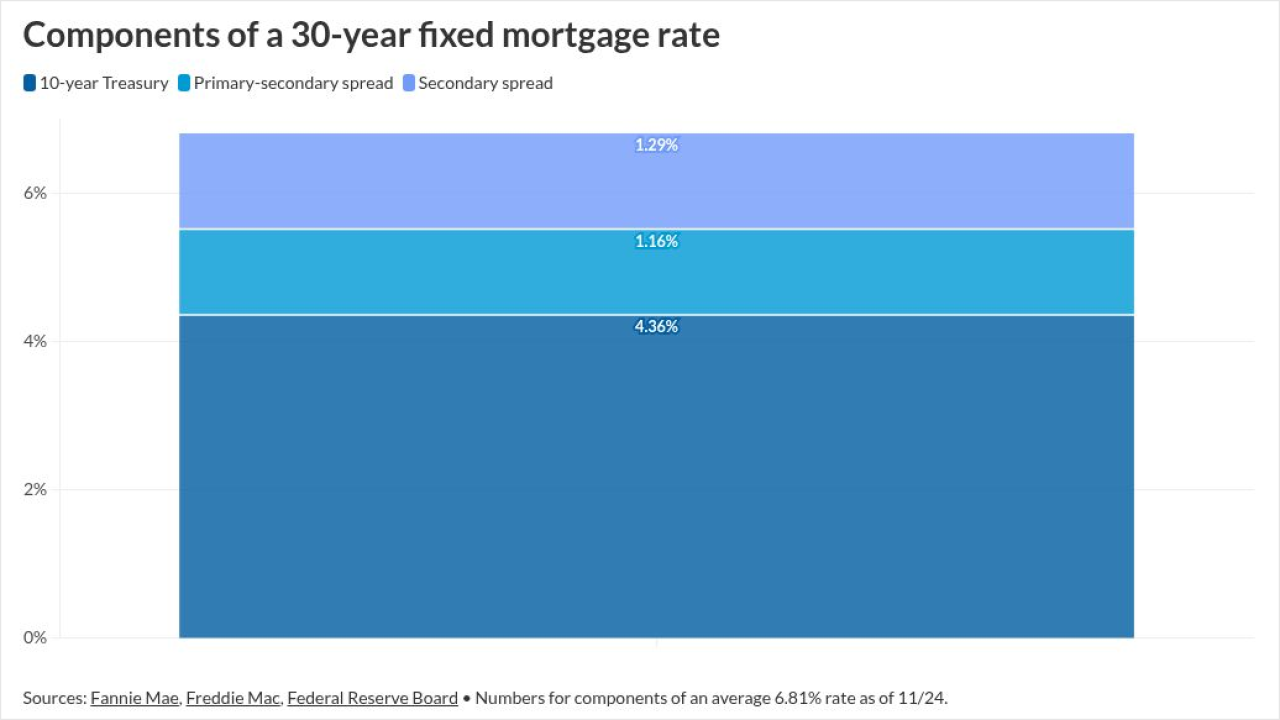Before aviation financial risk engineer Jennifer Villa joined Ashland Place Finance, a New York City-based, global commercial aerospace, institutional financing platform founded in 2021, she had seen it all during her over 20-year career in aircraft leasing and banking.
The Sept. 11, 2001 terror attacks forced a wave of foreclosures and consolidations. A stronger industry emerged from a credit risk perspective by 2019. Then the COVID-19 pandemic hit the industry even harder, presenting new operational and credit challenges, Villa says.
As if Boeing's 737 Max's jets being grounded worldwide following an Alaska Airlines incident in January 2024 weren't enough pressure on the U.S. aviation sector, high interest rates, and other macroeconomic risks are limiting trading and securitization.
New aircraft financing burdens and the growing demand for air travel, however, are motivating airlines to embrace short-term leasing, according to a Polaris Market Research study. Notably, airlines leverage aircraft leasing to reduce debt, preserve cash reserves, and further enhance financial flexibility and fleet management. As a result, the global aircraft leasing market is expected to grow to $374.2 billion by 2032, up from $193.4 billion in 2023, the study found. In 2024, same as in 2023, the International Air Transport Association expects stable net profitability for airlines globally. Reportedly, AerCap Holdings, the aircraft leasing company, predicts the industry's biggest challenge in 2024 is an aircraft supply shortage that it expects to persist for years to come, despite of the robust demand for aviation assets.
Maturing unsecured debt risk is another potential issue. Aircraft lessors debt accounts for more than 40% of the $42.5 billion of unsecured debt maturing in 2024, (held by North American non-bank financial institutions), according to Fitch Ratings' "North American Non-Bank Financial Institution Refinancing Risk Report: 2024".
While operating cash flows are meaningful and should continue as the sector recovery, says Meghan Neenan, a managing director at Fitch Ratings, aviation ABS maturity risk can challenge aircraft lessors. They are the most exposed to refinancing risk, even though delivery delays could reduce near-term funding needs.
The pandemic reaffirmed the merit of Villa's relationship—driven lending and ABS structuring method. She describes it as "brick by brick", bespoke and clean, Villa says. Villa now is weaving her meticulous, liquidity and asset credit-risk focused mindset into the company's DNA.
Under her leadership, the subsidiary of institutional investment management firm Davidson Kempner Capital Management LP issued APL Finance 2023-1, its inaugural $324.3 million securitization (backed by a pool of in-house originated prime loan facilities fully secured by on lease, aircraft and aircraft engines) in December 2023.
Villa talked to Asset Securitization Report about the scarcity of aviation ABS issuance as the market recovers, her ABS lending philosophy and what differentiates the company from its peers.
ASR: You decided to join Ashland Place after successfully running a $22 billion business at CIT Aerospace, one of the largest leasing companies in the aviation industry. How did that business leadership, lending and securitization background, and deep industry roots lead you to Ashland Place?
Villa: I grew up professionally at CIT in the aviation business, overseeing both lending and leasing. Over the 20 years I was there, the leasing business scaled much more quickly than the lending side because it was easier to grow the lease book by ordering new airplanes from Airbus and Boeing. The loans were usually financing lessor-to-lessor trades or sale-leasebacks with typical durations of two to four years. So, while you could grow via $1 billion in new loan volume per year, you could then lose $300 million to $400 million per year via natural amortization. This is a great risk/exposure management tool, but also an obstacle to growth.
Leasing became what CIT was known for because of its size versus the lending business, but I managed both books as chief risk officer, and then from 2017 through 2021, after the divestiture of the lease book to Avolon, I was the president of the loan business. The aviation lending business is very relationship- driven. After the Avolon sale, CIT saw a spike in prepayments. That was when CIT management asked me to come back and run the loan business, to retain those relationships, and grow the business.
With a number of CIT folks displaced by the Avolon merger, I brought a few others with me and we had great success from 2017 to 2021 when CIT sold the aviation loan book. At that time, I joined Davidson Kempner in launching Ashland Place. We launched in September 2021. The inaugural aviation ABS issued in December 2023 aligns with our business model and specific intention to be a perennial issuer in the ABS market.
ASR: Aside from a financial risk focused mindset, what are some of the other business principles you rely on to grow the company?
Villa: Lasting, relationships are a very important part of our success. Business cards or workplaces may change, but not the people and the trust involved. Many customers have done multiple deals with us. That has been key to our growth.
The market noticed how consistently we have been doing deals and putting money to work, which is something not many aviation lenders have been able to do recently.
ASR: What differentiates Ashland Place's ABS pricing in this ecosystem of aviation issuers?
Villa: We are pleased with our ABS pricing and A note "AA" rating as a first time issuer, with investment grade ratings achieved through the C note and a "BB" rating for the D note.
The entirety of our ABS transaction on a loan-to-value basis measured against the aircraft value - sits inside of an A note lease ABS, which was very interesting to investors. Maybe some had been burned by aviation lease ABS through COVID. I think it resonated with investors that Ashland Place's loan ABS is much safer, compared to the relative risks of a lease ABS. Secondly, it was a true static pool. Typically, with lease ABS there is re-marketing risk and the risk profile of the transaction can change. With our deal, investors know what is in the pool of airlines and aircraft, and that it would not and could not change, which they appreciated.
Thirdly, investors liked that the transaction is clean and homogenous. All of the loans were primary originations by Ashland and we held the pen on the documentation for each. Furthermore, we are sole lender on each, so there are no inter-creditor entanglements. Every deal is bespoke, but all have relatively low LTVs, and are structured for the risk. That is comforting to investors, and I think it's a very large part of the reason we achieved the ratings and level of interest in the market.
Our deal is also the first loan ABS since the 2021 issuance of a different, larger size securitization of a book of loans purchased from National Australia Bank, that also had some unsecured loans and a few minority positions in contrast to the Ashland ABS.
ASR: There's no shortage of competitors, what enabled Ashland Place to be more active?
Villa: We have a very deep well of relationships. We approached the market knowing what transactions we can do and what we cannot do. The industry has seen that we have executed over, and over again, since we launched.
I think my clients also appreciate my leasing background. We understand the metal [aircraft] and have been in their shoes before as lessor, thus are aware of what is important to them for debt.
ASR: Have any other financial risk lessons informed your success past and present?
Villa: I have been in the industry through multiple cycles: 9/11, the Great Foreclosure Crisis, COVID, Russia's war in Ukraine. No matter what, it all comes down to structure.
First, and foremost, we are aircraft experts very attuned to value and where our LTV risk is over the life of the loan. The lending we do is resilient because the counterparty has significant equity in the underlying asset for the duration. That "extra line of defense" proved extremely valuable in a crisis like COVID where borrowers wanted to protect their equity in the assets.
Nonetheless, we also do a deep dive on airline credit. I typically lend to lessors secured by both an aircraft and a lease. The airline rent paid to my borrower is the primary source of repayment of my loan. The airline's creditworthiness is integral to my structure, as is the jurisdiction. We absolutely make sure to understand the legal regime where our underlying airline credits reside. I need my borrowers to have access to my collateral in any default situation.
ASR: How could the aircraft supply imbalance affect aviation financing in 2024?
Villa: Aircraft supply is essentially a duopoly between Airbus and Boeing in the 100-plus seat segment. Post-COVID supply chain challenges and engine technology issues, have curtailed new deliveries from both manufacturers. Typically, my volume came from lessor-to-lessor trades, which usually are the larger investment grade-rated lessors with 300-plus aircraft selling to smaller lessors. But given the impact of geopolitical issues and overall rate increases on top of the aforementioned concerns, there has not been as much secondary market trading. Hence, we are very proud to have grown as much as we have in spite of these headwinds.
Many of these factors still exist. However, aircraft continue to hold their value extremely well and there is continued activity. The inaugural ABS was just a subset of the portfolio we have underwritten to date. We expect to grow and be a continuing ABS issuer.





